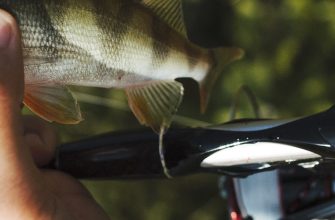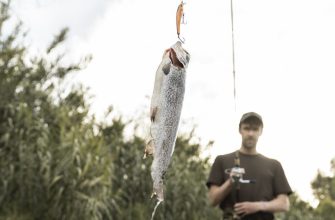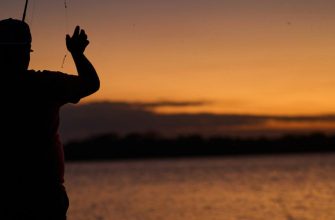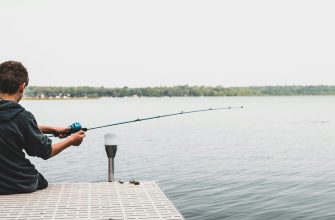- What’s a Flatfish: a Quick Overview
- Characteristics and Anatomy
- Habitat and Distribution in America
- Life Cycle and Reproduction
- Types of Flat fish in North America
- Atlantic Halibut (Hippoglossus hippoglossus)
- Size and Weight
- Habitat and Distribution
- Fishing Methods
- Economic and Culinary Importance
- Pacific Halibut (Hippoglossus stenolepis)
- Size and Weight
- Habitat and Distribution
- Fishing Methods
- Economic and Culinary Importance
- California Halibut (Paralichthys californicus)
- Size and Weight
- Habitat and Distribution
- Fishing Methods
- Economic and Culinary Importance
- Greenland Halibut (Reinhardtius hippoglossoides)
- Size and Weight
- Habitat and Distribution
- Fishing Methods
- Economic and Culinary Importance
- Yellowfin Sole (Limanda aspera)
- Size and Weight
- Habitat and Distribution
- Fishing methods
- Economic and Culinary Importance
- Dover Sole (Microstomus pacificus)
- Size and Weight
- Habitat and Distribution
- Fishing methods
- Economic and Culinary Importance
- Arrowtooth Flounder (Atheresthes stomias)
- Size and Weight
- Habitat and Distribution
- Fishing Methods
- Economic and Culinary Importance
- Summer Flounder (Paralichthys dentatus)
- Size and Weight
- Habitat and Distribution
- Fishing Methods
- Economic and Culinary Importance
- Winter Flounder (Pseudopleuronectes americanus)
- Size and Weight
- Habitat and Distribution
- Fishing Methods
- Economic and Culinary Importance
- Southern Flounder (Paralichthys lethostigma)
- Size and Weight
- Habitat and Distribution
- Fishing Methods
- Economic and Culinary Importance
- Starry Flounder (Platichthys stellatus)
- Size and Weight
- Habitat and Distribution
- Fishing Methods
- Economic and Culinary Importance
- European Plaice (Pleuronectes platessa)
- Size and Weight
- Habitat and Distribution
- Fishing Methods
- Economic and Culinary Importance
- Turbot (Scophthalmus maximus)
- Size and Weight
- Habitat and Distribution
- Fishing Methods
- Economic and Culinary Importance
- Other Flat Fish to Catch in the Ocean
- Brill
- Dab
- Megrim
- Sanddab
- Tonguefish
- FAQs
- Q: What are flatfish and what are the different types of flatfish found in our oceans?
- Q: Why are flatfish often considered unique in the fish world?
- Q: Can you name two species of flatfish that are particularly popular in the culinary world?
- Q: How are flounders and soles different from each other?
- Q: What are the biggest flatfish in the world and where can they be found?
- Q: Are flatfish in any way endangered due to overfishing?
- Q: Why do people sometimes get confused between different types of flatfish?
- Q: Are flatfish found in muddy waters or do they prefer specific types of environments?
- Q: What are some delicious dishes that can be made from flatfish?
- Q: Are there any specific regions in the world where flatfish are undisputed favorites among seafood lovers?
Flatfish are a unique group of fish that have adapted to live and thrive on the sea floor. What sets them apart is their distinct body structure, with both eyes located on one side of their head. This adaptation allows them to camouflage themselves and lie flat on the ocean floor, making them excellent ambush predators.
When it comes to different species like flounder, soles, turbots and other similar species are among the favorites in the American fishing industry. These fish are highly sought after for their delicate flavor and firm, yet flaky texture.
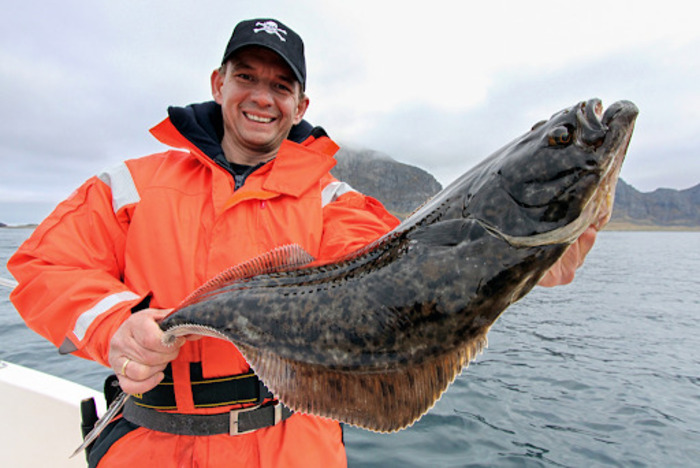
The British flatfish, known as plaice, is one of the most commonly caught and consumed flatfish species. With its mild and slightly sweet taste, it has become a popular choice on restaurant menus. Another well-known flatfish is the flounder, which is characterized by its translucent, black sea on the side of its body. Flounder is often praised for its tender, white flesh and delicate flavor.
If you’re looking for the biggest fish in the flatfish family, the halibut’s the one to beat. Known as the “king of the flatfish,” this favorite flatfish can reach impressive sizes and is highly prized by anglers. Its meat is dense, succulent, and has a slightly sweet taste.
American soles, including the winter flounder, summer flounder, and southern flounder, are also highly valued in the fishing industry. These species are known for their delicate and flavorful meat, making them a favorite among marine fish enthusiasts.
Let’s not forget about the turbot, a flatfish that often gets overshadowed by its more popular counterparts. Found in the North Pacific and North Atlantic oceans, the turbot offers a firm texture and a mild, yet distinctive flavor that marine fish lovers appreciate. Its flesh is white, lean, and bony, making it an excellent choice for various culinary preparations.
So, unless you live near the sea floor or engage in commercial or recreational fishing, you might not have encountered these different flatfish species. However, if you ever have the opportunity to savor their delicious meat, you’ll find that each one has its own unique characteristics that make it a delightful addition to any seafood dish.
Remember, when it comes to exploring the diverse world of flatfish, there’s always something new to discover beneath the waves.
What’s a Flatfish: a Quick Overview

Characteristics and Anatomy
Flatfish are a unique species of fish that have adapted to their environment in fascinating ways. One of the most distinctive features of flatfish is their asymmetrical body shape. Unlike most fish, flatfish have both of their eyes on one side of their body. This adaptation allows them to lie flat on the ocean floor and blend in with their surroundings.
Flatfish have a flattened body that is shaped like a ray. This allows them to easily maneuver through the water and navigate the ocean floor. They are typically found in the North Pacific region, where they wait for their prey to come near before striking. Flatfish are known for their ability to camouflage themselves, which helps them get close to their prey without being noticed.
Habitat and Distribution in America
In America, flatfish can be found along the coasts of the Pacific and Atlantic oceans. They are often found in muddy coastal areas, where they blend in with the sandy or muddy ocean floor. Flatfish are frequently caught by fishermen along the shore, making them a favorite among both commercial and recreational fishermen.
Life Cycle and Reproduction
Flatfish have a unique life cycle that is different from other fish species. They begin their lives with eyes on both sides of their body, but as they grow, one eye migrates to the other side, resulting in their characteristic one-sided appearance. This adaptation allows them to lie flat on the ocean floor and wait for their prey to swim by.
Flatfish are known for their delicious taste and are considered a sustainable fish option. They are a favorite among marine fish lovers and are often featured in restaurants and fish markets. Commercial fishing of flatfish is carefully regulated to ensure their populations remain stable and healthy.
Types of Flat fish in North America
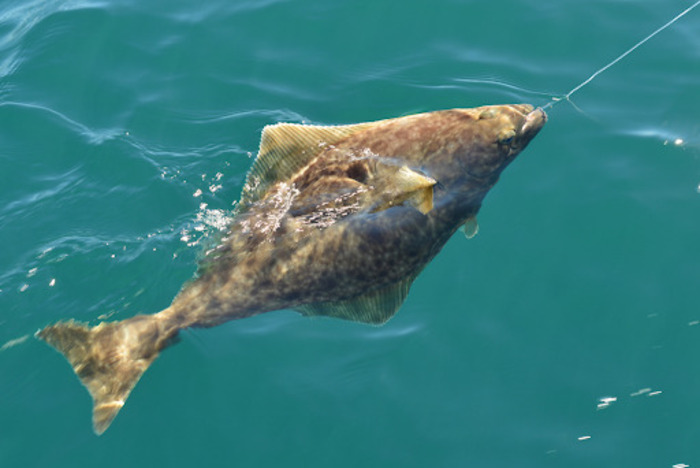
Atlantic Halibut (Hippoglossus hippoglossus)
Size and Weight
Atlantic Halibut can grow up to 8 feet long and weigh hundreds of pounds.
Habitat and Distribution
These flatfish are found in the North Atlantic Ocean, from Greenland and Labrador in Canada to the Arctic. They prefer shallow waters along the Atlantic coast.
Fishing Methods
Fishermen typically catch Atlantic Halibut using bottom fishing techniques. They are known for their strength and can put up quite a fight.
Economic and Culinary Importance
Atlantic Halibut is highly valued in the seafood industry for its firm and flavorful meat. It is a favorite among commercial and recreational fishermen.
Pacific Halibut (Hippoglossus stenolepis)

Size and Weight
Pacific Halibut can also reach impressive sizes, with some individuals surpassing 8 feet long and weighing over 500 pounds.
Habitat and Distribution
These flatfish are primarily found in the North Pacific Ocean, particularly along the shores of Alaska and the Pacific Northwest.
Read more: What Types of Fish in Lake Michigan You Can Angle?
Fishing Methods
Fishermen target Pacific Halibut using similar bottom fishing techniques as with Atlantic Halibut. They are abundant in the cold waters of the Pacific Ocean.
Economic and Culinary Importance
Pacific Halibut is highly prized for its delicate flavor and flaky texture. It is a popular choice in both commercial and recreational fisheries.
California Halibut (Paralichthys californicus)
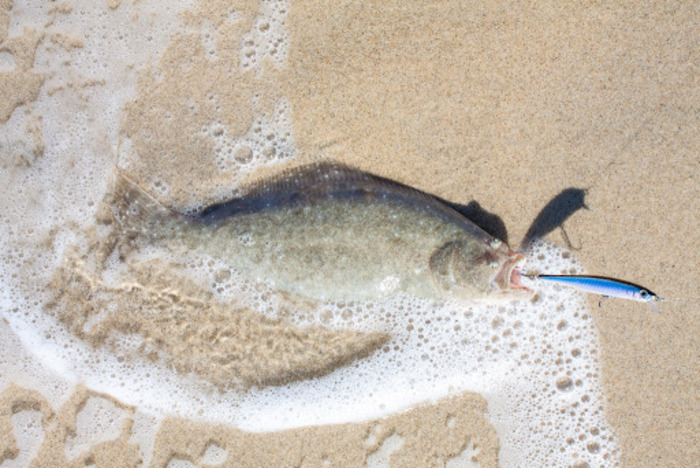
Size and Weight
California Halibut are generally smaller than their Atlantic and Pacific counterparts, reach up to 3 feet in length and weigh about 40 pounds.
Habitat and Distribution
These flatfish are native to the Pacific coast of North America, particularly along the shores of California. They inhabit sandy and muddy areas.
Fishing Methods
Fishermen often target California Halibut using a variety of techniques, including drift fishing and trolling. They can be found in shallow coastal waters.
Economic and Culinary Importance
California Halibut is a popular marine fish choice in the region, appreciated for its mild and slightly sweet flavor. It is a sustainable fishery.
Greenland Halibut (Reinhardtius hippoglossoides)
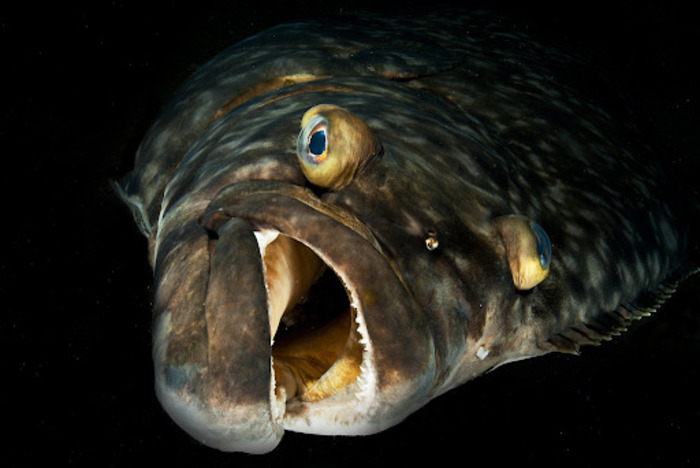
Size and Weight
Greenland Halibut is typically smaller than other species of halibut, reaching up to 3 feet and weighing around 20 pounds.
Habitat and Distribution
These flatfish are found in the cold waters of the North Atlantic Ocean, particularly around Greenland and the Arctic regions.
Fishing Methods
Fishermen target Greenland Halibut using various bottom fishing techniques. They can be found in deep waters and are known for their delicious flavor.
Economic and Culinary Importance
Greenland Halibut is highly regarded as a culinary delicacy, prized for its delicate and flaky white flesh. It is a favorite among marine fish enthusiasts.
Yellowfin Sole (Limanda aspera)
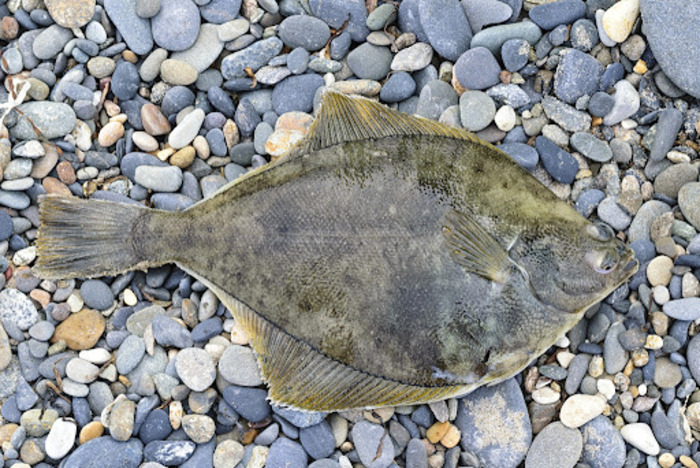
Size and Weight
Yellowfin sole typically grow up to 16 inches and can weigh up to 2 pounds.
Habitat and Distribution
They are commonly found in the Pacific Ocean, particularly along the Pacific shore of North America.
Fishing methods
Fishermen often target Yellowfin Sole in shallow waters, using techniques such as bottom trawling and jigging.
Economic and Culinary Importance
Yellowfin Sole is highly valued for its delicate flavor and firm texture. It is a popular choice among marine fish lovers and is often used in various culinary preparations.
Dover Sole (Microstomus pacificus)
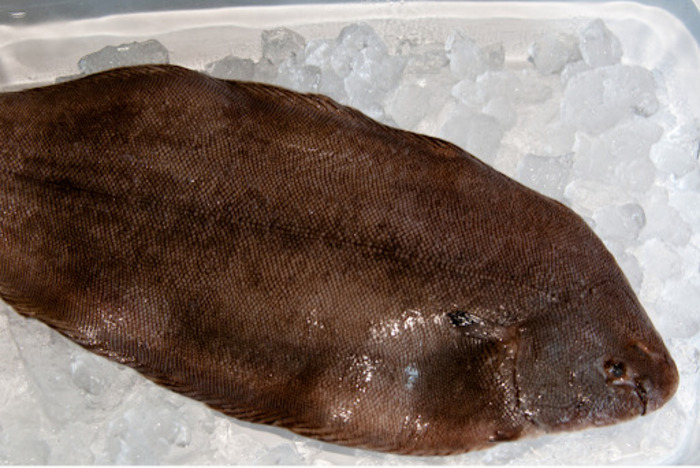
Size and Weight
Dover Sole can reach up to 18 inches and weigh about 3 pounds.
Habitat and Distribution
They inhabit the sandy and muddy bottoms of the Pacific Ocean, primarily along the Pacific shore.
Fishing methods
Fishermen target Dover Sole using bottom trawling and other similar techniques.
Economic and Culinary Importance
Dover Sole is highly regarded for its delicate and sweet flavor, making it a prized marine fish choice. It is often featured in gourmet dishes and is a favorite among marine fish enthusiasts.
Arrowtooth Flounder (Atheresthes stomias)

Size and Weight
Arrowtooth flounders are known to grow up to 3 feet and can weigh up to 20 pounds.
Habitat and Distribution
These flounders are commonly found in the North Pacific, specifically in the coastal waters of Alaska. They prefer muddy and sandy bottom habitats.
Fishing Methods
Fishermen can catch arrowtooth flounder using a variety of methods, including bottom trawling and handline fishing. They are often targeted by commercial and recreational fishermen.
Economic and Culinary Importance
Arrowtooth flounder has gained popularity in the culinary world due to its delicate and mild flavor. It is highly sought after as a seafood delicacy and is a favorite among marine fish enthusiasts.
Summer Flounder (Paralichthys dentatus)

Size and Weight
Summer flounder, also known as fluke, can reach up to 2.5 feet and can weigh up to 26 pounds.
Habitat and Distribution
These flounders are primarily found along the Atlantic coast of North America, from Labrador in Canada to the southern shore. They inhabit shallow waters and are commonly found in estuaries and bays.
Fishing Methods
Fishermen can target summer flounder using various fishing techniques, including drift fishing and bottom fishing. They are a popular catch among recreational fishermen along the Atlantic shore.
Economic and Culinary Importance
Summer flounder is highly valued in the culinary world for its delicate texture and mild flavor. It is often featured in seafood dishes and is considered a delicacy in many coastal regions.
Winter Flounder (Pseudopleuronectes americanus)
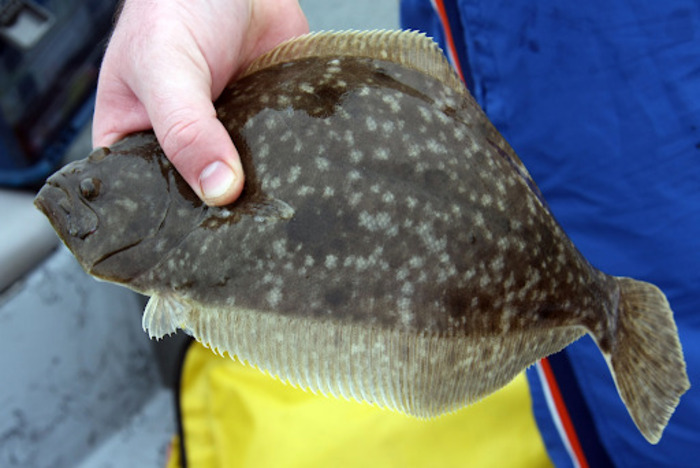
Size and Weight
Winter flounder, also known as blackback or lemon sole, can grow up to 2 feet and can weigh up to 4 pounds.
Habitat and Distribution
Winter flounder is found along the Atlantic coast of North America, from Labrador in Canada to the southern shore. They inhabit sandy and muddy bottoms in nearshore waters.
Fishing Methods
Fishermen primarily target winter flounder using bottom fishing techniques. They are commonly caught by both commercial and recreational fishermen along the Atlantic coast.
Economic and Culinary Importance
Winter flounder is highly regarded in the culinary world for its delicate and sweet flavor. It is a popular choice for marine fish lovers and is often featured in seafood restaurants.
Southern Flounder (Paralichthys lethostigma)
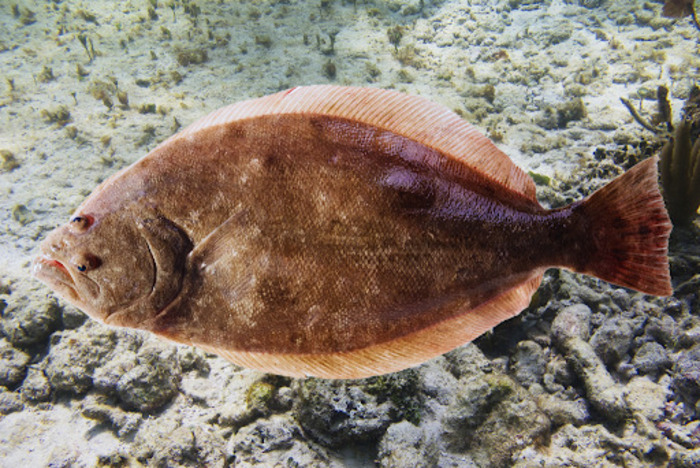
Size and Weight
Southern flounder can grow up to 3 feet and weigh up to 20 pounds.
Habitat and Distribution
They are commonly found in estuaries, bays, and nearshore waters along the Atlantic and Gulf shores of the United States.
Fishing Methods
Fishermen can catch southern flounder using various methods, including bottom fishing, trolling, and gigging.
Economic and Culinary Importance
Southern flounder is highly valued for its delicate flavor and is a popular seafood choice among local communities. It contributes significantly to the economic activity in the coastal regions of North America.
Starry Flounder (Platichthys stellatus)

Size and Weight
Starry flounder can reach up to 2 feet and weigh up to 5 pounds.
Habitat and Distribution
They are commonly found in the Pacific Ocean along the western shore of North America, from Alaska to California.
Fishing Methods
Fishermen typically target starry flounder using bottom fishing techniques, such as using bait rigs or jigging.
Economic and Culinary Importance
Starry flounder is valued for its mild taste and firm texture. It is a popular choice for both commercial and recreational fishermen in the region.
European Plaice (Pleuronectes platessa)

Size and Weight
The European plaice is a medium-sized flatfish that typically measures between 30 and 40 centimeters in length and weighs around 1 kilogram. However, larger specimens can reach up to 70 centimeters and weigh up to 7 kilograms.
Habitat and Distribution
European plaice can be found in the coastal waters of the North Atlantic Ocean, from the Baltic Sea to the Mediterranean Sea. They prefer sandy or muddy seabeds and are often found at depths ranging from 20 to 100 meters.
Fishing Methods
Fishermen commonly target European plaice using bottom fishing techniques. They use baited hooks or artificial lures and fish near the sea floor where these flatfish are known to feed.
Economic and Culinary Importance
The European plaice is highly regarded for its delicate flavor and firm, white flesh. It is a popular seafood choice in many European countries, especially in regions where it is abundant. Chefs often prepare plaice by pan-frying or baking it, and it pairs well with a variety of sauces and seasonings.
Turbot (Scophthalmus maximus)
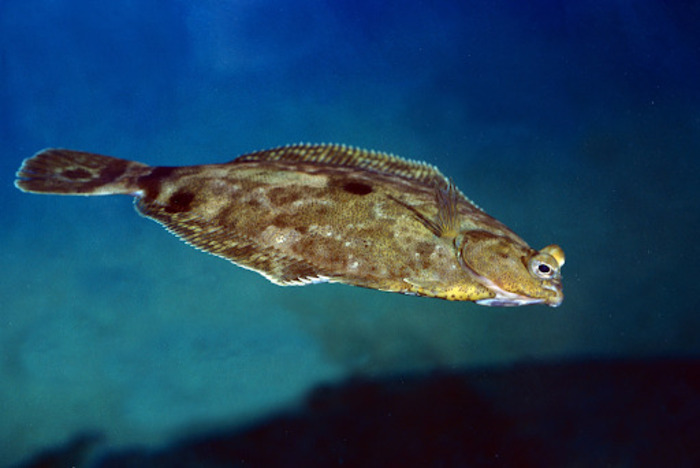
Size and Weight
Turbot is one of the largest flatfish species found in North America, with adults reaching an average length of 50 to 70 centimeters and weighing between 2 and 10 kilograms. Exceptional individuals can grow even larger.
Read more: Raystown Lake Fishing Guide: Fishing Charters, Map, License – Pennsylvania
Habitat and Distribution
Turbot inhabits the sandy and gravelly sea floors of the North Atlantic Ocean, ranging from the shores of New England to the Gulf of Mexico. They are also found in the eastern Atlantic, from Norway to the Mediterranean Sea.
Fishing Methods
Commercial and recreational fishermen employ various methods to catch turbot, including trawling, gillnetting, and longlining. These methods allow fishermen to target turbot in their preferred habitats along the continental shelf.
Economic and Culinary Importance
Turbot is highly valued for its delicate flavor and firm, white flesh. It is often considered a premium marine fish option and is sought after by marine fish enthusiasts and fine dining establishments. The fish is versatile and can be prepared by grilling, poaching, or baking, and it pairs well with both subtle and bold flavors.
Other Flat Fish to Catch in the Ocean
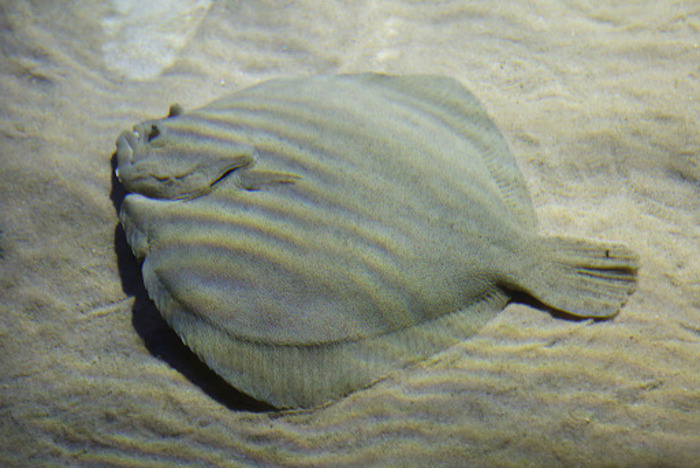
Brill
Native habitats: Brill is commonly found in the North Atlantic Ocean, particularly in the waters around Europe and the United Kingdom.
Characteristics: Brill has a flat body with a diamond shape and a brownish color. It has both eyes on the right side of its body. Brill can grow up to 3 feet and weigh up to 15 pounds.
Fishing methods: Fishermen often catch brill using bottom fishing techniques. They are typically caught using baited hooks, such as squid or fish strips, near the sea floor. Brill are known for their strong resistance when hooked, providing an exciting challenge for fishermen.
Dab
Native habitats: Dab is a species of flatfish that can be found in the North Atlantic Ocean, particularly in the waters around Europe and the United Kingdom.
Characteristics: Dab has an oval-shaped body with a sandy-brown color. It has both eyes on the right side of its body. Dab can reach up to 10 inches and weigh up to 1 pound.
Fishing methods: Dab are commonly caught using bottom fishing techniques. Fishermen use baited hooks, such as ragworms or small pieces of fish, to target dab near the sea floor. Dab are known for their delicious white flesh, making them a popular choice among marine fish lovers.
Megrim
Native habitats: Megrim is widely distributed in the North Atlantic Ocean, including the waters around Europe and the United Kingdom.
Characteristics: Megrim has a diamond-shaped body with a light brown color. It has both eyes on the right side of its body. Megrim can grow up to 20 inches and weigh up to 2 pounds.
Fishing methods: Fishermen often target megrim using bottom fishing techniques. They use baited hooks, such as squid or shrimp, to entice megrim near the sea floor. Megrim is known for its delicate flavor and firm texture, making it a prized catch among fishermen.
Sanddab
Native habitats: Sanddab is commonly found along the Pacific coast of North America, from California to Alaska.
Characteristics: Sanddab has a flat and oval-shaped body with a light brown color. It has both eyes on the right side of its body. Sanddabs can reach up to 12 inches and weigh up to 1 pound.
Fishing methods: Sanddabs are often caught using bottom fishing techniques. Fishermen use baited hooks, such as small pieces of fish or shrimp, to target sanddabs near the sea floor. Sanddabs are highly prized for their delicate flavor and are a popular choice for recreational fishermen.
Tonguefish
Native habitats: Tonguefish can be found in the North Atlantic Ocean, including the waters around the United States and Canada.
Characteristics: Tonguefish have a flat and elongated body with a light brown color. It has both eyes on the right side of its body. Tonguefish can grow up to 12 inches and weigh up to 1 pound.
Fishing methods: Fishermen often catch tonguefish using bottom fishing techniques. They use baited hooks, such as small pieces of fish or shrimp, to attract tonguefish near the sea floor. Tonguefish are known for their delicate and flavorful meat, making them a prized catch for recreational fishermen.
Remember to always check local fishing regulations and obtain the necessary permits before embarking on any fishing trips.
Happy fishing!
Disclaimer: The information provided in this article is based on reliable sources and aims to offer accurate insights into the world of flatfish. However, it’s important to consult local regulations and guidelines before engaging in any fishing activities to ensure sustainability and adherence to specific fishing rules.
FAQs
Q: What are flatfish and what are the different types of flatfish found in our oceans?
A: Flatfish are a group of fish characterized by their unique flattened bodies and both eyes on one side of their head. Some different types of flatfish found in our oceans include flounders, soles, turbots, halibut, plaice, and sand dabs.
Q: Why are flatfish often considered unique in the fish world?
A: Flatfish are often considered unique due to their asymmetrical bodies, with both eyes located on one side. This physical adaption allows them to camouflage themselves effectively on the seafloor.
Q: Can you name two species of flatfish that are particularly popular in the culinary world?
A: Two species of flatfish that are particularly popular in the culinary world are European flounder and Alaska plaice.
Q: How are flounders and soles different from each other?
A: Flounders and soles differ in physical appearance, with flounders having distinct orange spots and soles typically being smaller in size. Additionally, flounders live on the North Pacific coast, while soles are often found in British waters.
Q: What are the biggest flatfish in the world and where can they be found?
A: The biggest flatfish in the world is the halibut. Halibuts are found on the west coast of North America and are often prized by fishers for their size and flavor.
Q: Are flatfish in any way endangered due to overfishing?
A: Yes, some flatfish species have been overfished in certain regions, leading to concerns about their populations. Conservation efforts are in place to tackle this issue.
Q: Why do people sometimes get confused between different types of flatfish?
A: People sometimes get confused between different species of flounder due to similar appearances and common names used in different regions. For example, the term “sole” is often used as a catch-all for various flatfish, leading to confusion.
Q: Are flatfish found in muddy waters or do they prefer specific types of environments?
A: Flatfish are commonly found on sandy or muddy bottoms, where they can camouflage themselves effectively. They are mainly bottom-dwellers and are often found on the North Pacific coast and in British waters.
Q: What are some delicious dishes that can be made from flatfish?
A: Flatfish are often used to make delicious dishes such as fillets, crabmeat-stuffed flounder, and pan-seared turbot. Their delicate and mild flavor makes them a favorite in seafood cuisine.
Q: Are there any specific regions in the world where flatfish are undisputed favorites among seafood lovers?
A: Yes, regions like Iceland and the North American west coast are known for their love of flatfish in culinary traditions. The local availability of fresh flatfish makes them an undisputed favorite among marine fish lovers in these areas.

